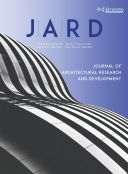Abstract
At present, Guangzhou homestay industry is facing a bottleneck. Therefore, it is particularly important to analyze the factors that influence the competitiveness of rural homestays in Guangzhou, determine the evaluation system of competitiveness, and determine the weight of each factor. Based on Porter’s diamond theory, this paper analyzes and summarizes the influencing factors of homestay competitiveness, and divides the influencing factors into 5 primary factors and 34 secondary factors. The analytic hierarchy process (AHP) was used to determine the judgment matrix to form the weight results of each factor, and the results show that product characteristics account for the largest proportion among first level factors. Secondary factors such as theme creativity, personalized brand and the overall score account for a large proportion. The research results can act as a reference for the construction of competitiveness evaluation mechanism and model of local rural quality homestays.
References
Mohammad H, 2014, Measuring Tourist Service Satisfaction at Destination: A Case Study of Cox’s Bazar Sea Beach, Bangladesh. American Journal of Tourism, 3(1): 32–43.
Nimesh U, 2020, A Preliminary Study of Novel Coronavirus Disease (COVID-19) Outbreak: A Pandemic was Leading Crisis in the Tourism Industry of Nepal. Journal of Tourism and Hospitality Education, 10: 108–131.
Qiu RTR, Park J, Li S, et al., 2020, Social Costs of Tourism During the COVID-19 Pandemic. Annals of Tourism Research, 84: 102994.
World Travel and Tourism Council, 2019, Travel & Tourism: Economic Impact 2017 (World), viewed March 10, 2022, https://wttc.org/research/economic-impact
Guo JR, 2020, China’s Homestay Tourism Development Report (2019), Social Sciences Academic Press, Beijing.
National Homestay Industry Development Research Report (2018), n.d., viewed March 10, 2022 https://www.waitang.com/report/21150.html
Guangdong Province Homestay Industry Development Report (2019), n.d., viewed March 10, 2022, https://max.book118.com/html/2021/0705/6220201204003210.shtm
Bai K, Zhang CH, 2009, Study on Brand Personality characteristics of Rural Tourism Destinations: A Case Study of “Farmhouse Music” in Chang’an District, Xi’an. Finance and Trade Research, 2009(3): 114–120.
Jiang J, Li Y, 2014, A Review of “Home Stay” in Tourism. Tourism Research, 6(4): 16–22.
Huang R, Li Y, Huang J, 2021, Competitiveness Evaluation of Homestay Based on Tourist Network Rating: A Case Study of Gulangyu Island. Tourism Forum, 2021(01): 27–40.
Li Y, 2018, Rambling on the Aesthetics of Homestay Life. China Tourism Review, 2018(01): 22–26.
Chen XL, 2019, Study on Spatial Pattern and Influencing Factors of Homestays in Sanya City, unpublished master’s thesis, Hunan Normal University.
Alison JM, Anna S, 2005, An Exploration of the Experiential Nature of Boutique Accommodation. Journal of Travel Research, 44 (1): 74–81.
Lowe A, 1988, Small Hotel Survival: An Inductive Approach. International Journal of Hospitality Management, 7(3): 197–223.
Clare CM, 2006, House as a Mirror of Self: Exploring the Deeper Meaning of Home. Nicolas-Hays, Inc.
Chen M, Qi YB, Liu HX, 2014, The Development of Taiwan’s Homestay Industry and its Reference to the Mainland’s Homestay Industry. Overview of Tourism (Second Half) 2014(20): 274–276.
Wang L, 2019, Research on the Development of Homestay in Banan District of Chongqing Based on Tourists’ Perceived Value, unpublished master’s thesis, Guizhou Normal University.
Chen TM, 2018, Research on the Marketing of Homestay Rural Tourism Products based on the Perspective of “Internet +,” unpublished master’s thesis, Wuhan Polytechnic University.
Zhou XR, Chen LL, Lin Y, 2018, Evaluation Research on Customer Satisfaction of Homestay in Yangshuo Scenic Spot of Guilin. China Market (14): 147–150.
Yan C, 2021, Study on the Choice Motivation of Rural Boutique Homestay in Lin’an from the Perspective of Consumer Behavior. Rural Economy and Science and Technology 2021(08): 91–93.
Zhou L, Liu YY, Yang M, 2019, Developing Rural Tourism and Promoting Rural Revitalization. Rural Science and Technology 2019(30): 62–63.
Komppula R, 2004, The Role of Individual Entrepreneurs in the Development of Competitiveness for a Rural Tourism Destination-A Case Study. Tourism Management 2004(04): 361–371?
Yang SH, Zhang JH, Dai X, 2008, Research on the Competitiveness of Rural Tourism Based on Type. Resources Development and Marketing 2008(04): 361–364.
Chin CH, Lo MC, Songan P, et al., 2014, Rural Tourism Destination Competitiveness: A Study on Annah Rais Longhouse Homestay, Sarawak. Procedia: Social and Behavioral Sciences, 144: 35–44.
Jiang Z, 2019, The Construction of Place Spirit in the Design of Rural Homestand. Unpublished master’s thesis, Beijing Forestry University.
Huang ZH, 2018, Study on a homestay in Quanzhou Ancient Urban area. Unpublished master's dissertation, Huaqiao University.
Huang HY, 2021, Innovation Research on Rural Tourism Homestay Under the New Media Marketing Model. Tourism and Photography 2021(02): 82–83.
Yan YS, Lai QF, Fu QL, 2020, Research on Components of the Soft Power of Homestay from the Perspective of Customer Perception. Journal of Sichuan Tourism Institute 2020(06): 87–91.
Liu LX, 2015, Research on Evaluation of Industrial Cluster Competitiveness Based on GEM Model. unpublished master’s thesis, Tianjin University of Finance and Economics.
Li JM, 2008, Research on Development Mechanism of Agricultural Industrial Cluster Based on Leading Enterprises, unpublished master’s thesis, Shihezi University.
